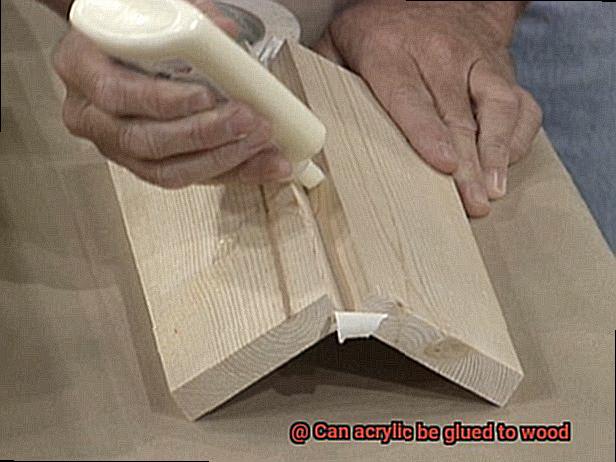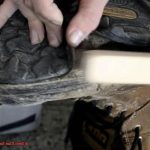Are you a DIY enthusiast, bursting with creativity and looking for a foolproof way to seamlessly connect acrylic sheets? Well, look no further. Today, we’re diving headfirst into the captivating realm of acrylic sheet bonding.
Imagine this: you’ve got an ingenious project in mind that involves multiple acrylic sheets. Maybe it’s a sleek display case for your treasured trinkets or an awe-inspiring acrylic masterpiece waiting to be brought to life. The possibilities are truly endless. But here’s the burning question on your mind – can acrylic sheets really be glued together?
Fear not, my fellow crafters. In this blog post, we’re going to unravel the secrets of acrylic sheet bonding. We’ll debunk any myths floating around and provide you with all the answers you crave. From understanding the unique properties of acrylic to exploring an array of glue options, we’ve got your back.
Prepare yourself for a deep dive into the world of adhesive selection. We’ll guide you through the essential factors that go into choosing the perfect glue for your project and equip you with nifty tips and tricks for achieving flawlessly fused sheets. Plus, we’ll lay out both the advantages and limitations of using glues in joining acrylics so that you can make informed decisions and let your creative vision soar.
So grab those safety goggles, dust off those crafting gloves, and get ready to embark on an exhilarating journey into the art of acrylic sheet bonding. Buckle up tight because we’re about to explore how to join these sheets with precision and finesse.
Adhesives Suitable for Bonding Acrylic Sheets
Contents
- 1 Adhesives Suitable for Bonding Acrylic Sheets
- 2 Solvent-Based Cements for Bonding Acrylic
- 3 Adhesive Tapes for Gluing Acrylic Sheets
- 4 Other Types of Adhesives for Gluing Acrylic Sheets
- 5 Selecting the Right Adhesive for Bonding Acrylic Sheets
- 6 Preparing the Surfaces for Gluing Acrylic Sheets
- 7 Applying Adhesives to Bond Acrylic Sheets
- 8 Tips and Tricks to Achieve a Strong Bond between Acrylic Sheets
- 9 Conclusion
When it comes to bonding acrylic sheets, few adhesives can rival the power of solvent-based cement. These remarkable compounds work their magic by delicately softening the acrylic surfaces, allowing them to meld together seamlessly.
Not only do they create a bond that can brave both moisture and temperature changes, but they also possess an uncanny ability to resist the passage of time. However, tread carefully, for these potent solvents can be toxic and demand a well-ventilated environment for their application.
Acrylic Adhesive Tapes: The Swift and Reliable Allies
In our quest for a hassle-free bonding process, we stumble upon the extraordinary acrylic adhesive tapes. These double-sided wonders boast adhesive properties specifically tailored for acrylic materials, making them ideal companions when time is an unforgiving foe. With no need for curing or drying time, they swiftly join acrylic sheets in holy matrimony. They too stand firm against moisture and temperature changes, ensuring a secure bond that will endure through countless adventures.
UV-Curing Adhesives: Illuminating the Path to Perfection
Behold the radiant beauty of UV-curing adhesives. These liquid marvels, when exposed to ultraviolet light, undergo a mesmerizing transformation, hardening into an unbreakable bond between acrylic sheets.
Their quick curing times and crystal-clear transparency make them an ideal choice for applications where aesthetics and clarity reign supreme. With the flicker of ultraviolet light, they solidify their place as the guardians of flawless connections.
Solvent-Based Cements for Bonding Acrylic
If you’re looking to create seamless connections between acrylic sheets, you’ve come to the right place. In this section, we’ll dive into the process of bonding acrylic sheets using solvent-based cements, exploring the various sub-topics along the way.
Let’s start by unraveling the magic behind solvent-based cements. These cements work their wonders by dissolving the surface of the acrylic. When applied, the solvents interact with the acrylic, causing it to soften and melt ever so slightly. As the solvents evaporate, a robust bond is forged, uniting the acrylic sheets in perfect harmony.
Now, let’s meet the superstar of solvent-based cements: methylene chloride, also known as dichloromethane. This mighty solvent takes center stage due to its exceptional ability to dissolve acrylic surfaces, ensuring a bond that stands the test of time. However, it’s important to handle methylene chloride with caution, as it can be hazardous if inhaled or absorbed through the skin. Safety should always be a priority when working with this potent solute.
While methylene chloride steals the spotlight, there are other solvents that can also be employed for bonding acrylic. Acetone and ethyl acetate may not possess the same strength as methylene chloride, but they still have their place in certain applications. Consider these alternatives if you’re seeking a different approach.
When it comes to applying solvent-based cements, they come in liquid form and can be effortlessly brushed or delicately applied with a needle applicator. Remember to exercise precision and apply an even coat of cement. Using excessive amounts can cause the acrylic to warp or lose its vibrant color. Once applied, press the acrylic sheets together firmly for a few minutes to ensure a bond that won’t let go.
Now, let’s talk about patience—something every solvent-based cement project requires. Curing time is an essential factor to consider. Allow the bond to fully set by giving it approximately 24 hours. Plan your project accordingly, and don’t rush the process.
Adhesive Tapes for Gluing Acrylic Sheets
Prepare to be captivated as we embark on a journey into the fascinating world of acrylic bonding. Today, we shed light on a versatile and user-friendly solution that will leave you wondering why you ever considered messy alternatives.
Brace yourselves, curious minds, as we delve into the realm of adhesive tapes for gluing acrylic sheets together. Get ready to discover the stickiest secrets and unleash your creativity.
Ease of Use:
Bid farewell to complicated bonding procedures and welcome the simplicity of adhesive tapes. With a mere peeling action and a swift press, even novices can achieve impeccable results. Say goodbye to the hassle of measuring, mixing, or waiting for drying time – adhesive tapes offer an unparalleled level of convenience.
Versatility at Its Finest:
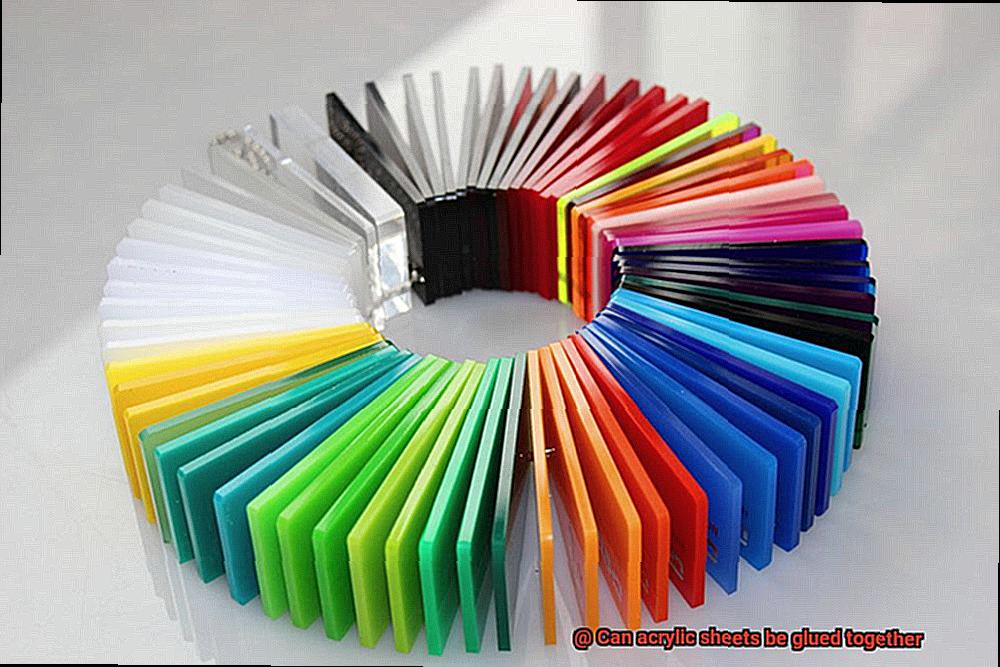
Prepare to be dazzled by the wide array of adhesive tape options at your disposal. Double-sided tapes steal the show with their impressive bonding capabilities, featuring adhesive coatings on both sides. Seamlessly join two smooth acrylic surfaces with effortless precision.

Cushioning Comfort:
Embrace the genius behind foam tapes, which elevate adhesive bonding to new heights. These innovative tapes incorporate a layer of foam, providing not only exceptional adhesion but also cushioning properties. Say goodbye to worries about irregular or textured surfaces – foam tapes have got you covered.
Strength and Durability Unleashed:
For those seeking a bond that defies the test of time, high bond tapes are here to make their mark. Engineered to withstand even the harshest conditions, these tapes boast unrivaled adhesive properties and stand tall in the face of extreme temperatures and harsh environments.

Other Types of Adhesives for Gluing Acrylic Sheets
Acrylic sheets are incredibly versatile and widely used in different industries. When it comes to joining multiple acrylic sheets together, there are numerous adhesive options available. In addition to the commonly used solvent-based cement and acrylic adhesive tapes, let’s delve into the exciting world of adhesives specifically designed for gluing acrylic sheets together.
Solvent-Based Adhesives:
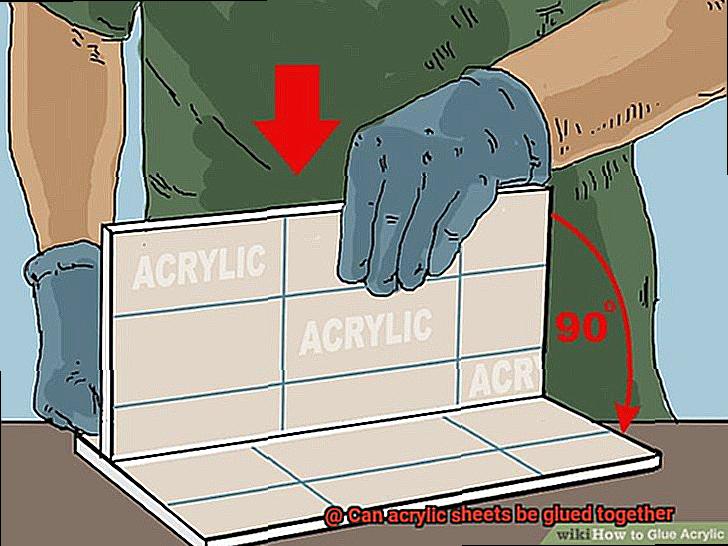
Solvent-based adhesives, such as solvent cement or weld-on adhesive, are a powerful choice for chemically bonding acrylic sheets. These liquid adhesives are carefully applied to the edges of the sheets, which are then pressed firmly together. As the solvent infiltrates the acrylic surfaces, they soften and fuse, creating strong and durable bonds. However, due to their flammable and toxic nature, proper handling and ventilation are essential when using solvent-based adhesives.
Structural Adhesives:
For applications that require high strength and resistance to temperature fluctuations, structural adhesives like epoxy or cyanoacrylate (superglue) are excellent choices. Epoxy adhesives typically come in two-part formulations that need to be skillfully mixed before application.
They offer exceptional bonding strength and chemical resistance, making them ideal for demanding projects. On the other hand, cyanoacrylate adhesives provide instant bonds and are perfect for smaller-scale projects. It’s important to note that cyanoacrylate adhesives may become brittle over time.
UV-Curing Adhesives:
If you’re looking for fast curing times and high bond strength, UV-curing adhesives are an exciting option. These adhesives consist of a liquid resin that cures rapidly when exposed to ultraviolet light. The beauty of UV-curing adhesives lies in their ability to create bonds without leaving any visible residue or discoloration on the acrylic surface. Thus, they are particularly suitable for applications where transparency is crucial. When time is of the essence, UV-curing adhesives are your go-to choice.
Tape Adhesives:
For those seeking an easy and clean alternative to liquid adhesives, tape adhesives designed specifically for bonding acrylic sheets are an excellent solution. These adhesive tapes, with their clear or translucent appearance, can be directly applied to the surfaces of the acrylic sheets.
They provide reliable bonding strength and are suitable for a wide range of applications. However, it’s important to consider the limitations of tape adhesives in terms of temperature resistance and long-term durability.
Selecting the Right Adhesive for Bonding Acrylic Sheets
Acrylic sheets, with their versatility and durability, have become a go-to material for various projects. When it comes to bonding acrylic sheets together, the adhesive you choose can make or break the success of your endeavor.
As an expert in the field of selecting the perfect adhesive for bonding acrylic sheets, I am here to guide you through the importance of making the right choice and provide you with a comprehensive overview of adhesive options available.
Why Choosing the Perfect Adhesive Matters:
- Strength and Durability: Acrylic sheets demand adhesives that can stand up to rigorous mechanical stress and environmental factors. Opting for the wrong adhesive can lead to weak joints that are susceptible to cracking or breaking.
- Application-Specific Requirements: Each project comes with its unique set of demands. Temperature resistance, UV resistance, and curing time are essential factors to consider when selecting an adhesive. By choosing an adhesive that meets these requirements, you ensure optimal performance and longevity.
Adhesive Options for Bonding Acrylic Sheets:
- Methyl Methacrylate (MMA) Adhesive: Renowned for its exceptional bonding properties and high strength, MMA adhesive is a popular choice for bonding acrylic sheets. It forms a chemical bond with the acrylic, resulting in a joint that is both robust and long-lasting.
- Cyanoacrylate Adhesive: Also known as super glue or instant glue, cyanoacrylate adhesive is a user-friendly option that dries quickly. It forms a strong bond between acrylic sheets; however, it may not be suitable for large-scale projects as it can become brittle over time.
- Polyurethane Adhesive: If your application requires flexibility and impact resistance, polyurethane adhesive is an excellent choice. It provides a flexible bond capable of withstanding vibrations and movements without compromising the integrity of the joint.
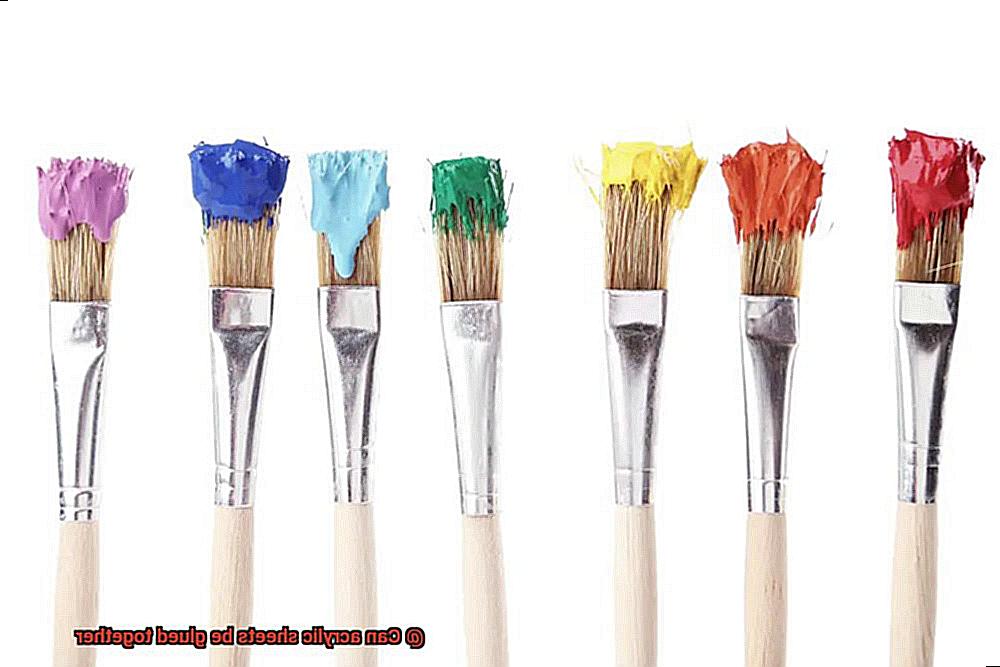
Proper Surface Preparation:
Achieving a successful bond between acrylic sheets hinges upon proper surface preparation. Thoroughly clean the surfaces to be bonded, ensuring they are free from any dust, grease, or contaminants. Enhance adhesion by lightly sanding the surfaces with fine-grit sandpaper, creating micro abrasions that improve contact between the adhesive and the acrylic.
Preparing the Surfaces for Gluing Acrylic Sheets
Are you ready to take on the challenge of bonding acrylic sheets together? Before you dive into this exciting endeavor, it’s crucial to prepare the surfaces properly. Trust me, investing time in these essential steps will ensure a bond that is not only strong but also long-lasting. So, let’s embark on a journey to learn how to prepare surfaces for gluing acrylic sheets together and create something truly remarkable.
Step 1: Thorough Cleaning – A Pristine Canvas
To kickstart the preparation process, your first task is to ensure that the surfaces are immaculately clean. Dust, dirt, or even a hint of grease can hinder the adhesive’s ability to work its magic. So, grab a mild soap or detergent, mix it with warm water, and gently cleanse the surfaces. Remember to avoid any abrasive cleaners or harsh chemicals that may damage the delicate acrylic.
Step 2: Rinse and Dry – Banishing Moisture
Once you’ve removed all traces of impurities, it’s time to rinse the surfaces with fresh water. Ensuring that no residue remains is crucial for a successful bond. After rinsing, give the surfaces ample time to air dry completely or use a soft cloth to eliminate any lingering moisture.
Step 3: Light Sanding – Creating Texture for Triumph
Now comes the moment for some gentle sanding action. This step helps create a rougher texture on the surfaces, providing an increased area for the adhesive to grip onto. Grab some fine-grit sandpaper (around 220 grit) and start sanding in gentle circular motions. Remember, be light-handed to avoid scratching or damaging the acrylic.
Step 4: Dust Busting – A Clean Slate
After sanding, it’s essential to remove any sanding dust from the surfaces. You can achieve this by using a soft cloth or employing the power of compressed air. Remember, a pristine surface is crucial for a successful bond, so leave no room for debris.
Step 5: Elevate with an Acrylic Cleaner – The Extra Mile
For those seeking an added level of perfection, consider using a solvent-based cleaner specially formulated for acrylics. These cleaners work wonders in removing any remaining dirt or oils, leaving the surfaces primed and ready for gluing. Just ensure you follow the manufacturer’s instructions to achieve the best results.
Applying Adhesives to Bond Acrylic Sheets
Delve into the captivating realm of applying adhesives to bond acrylic sheets, where precision and perfection meet. Discover the secrets to creating robust, enduring bonds that will leave a lasting impression. Let’s embark on this journey together and unlock the true potential of adhesive applications.
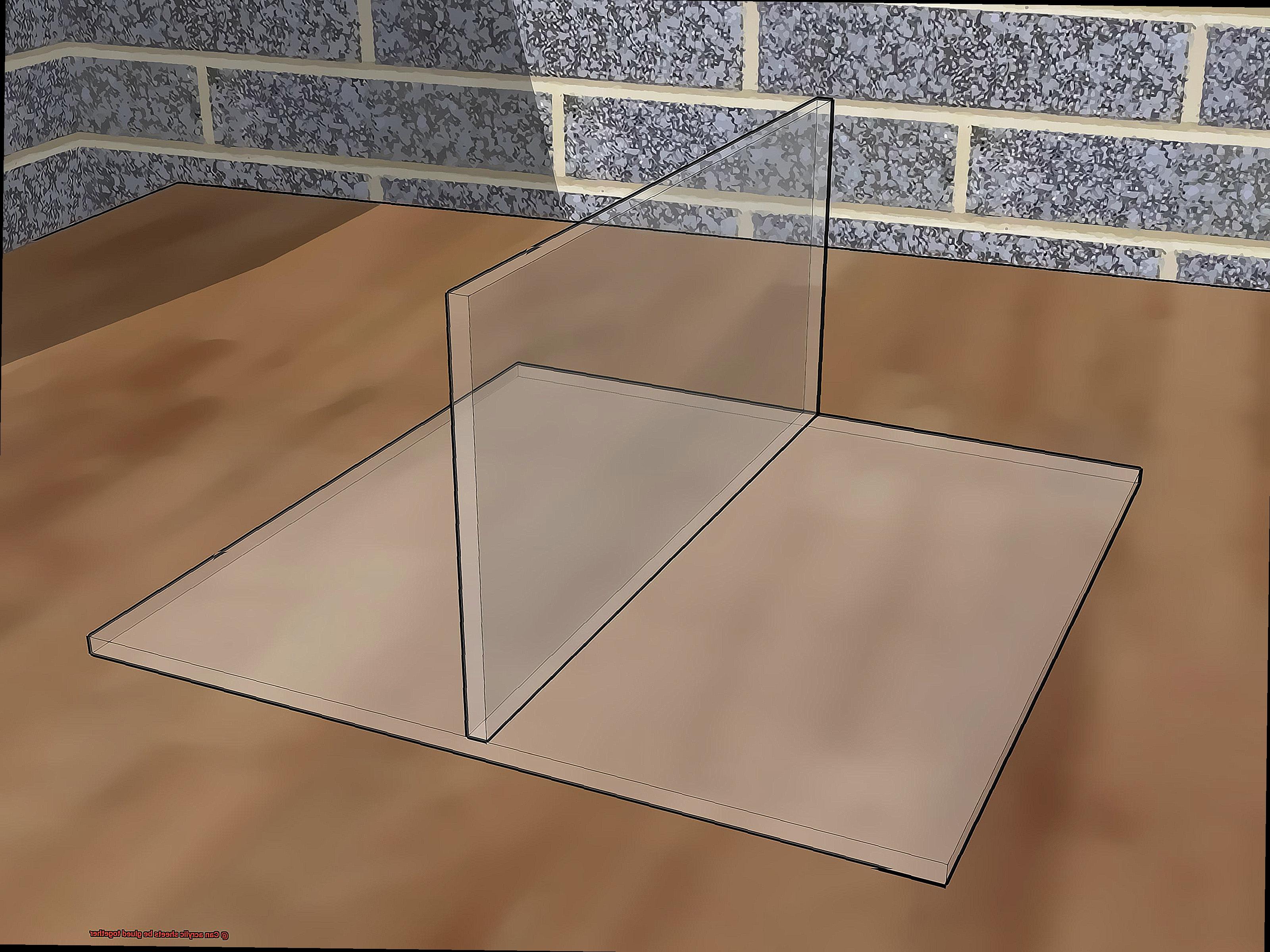
Choosing the Right Adhesive:
Unlock a world of possibilities by selecting the perfect adhesive for bonding acrylic sheets. Solvent-based adhesives reign supreme in their ability to soften the acrylic surface, enabling sheets to fuse flawlessly under pressure. However, exercise caution and choose an adhesive carefully, ensuring compatibility with your specific acrylic type.
Preparing the Surfaces:
Prepare for greatness by meticulously cleaning and priming the surfaces of your acrylic sheets. Rid them of any dirt, dust, or grease that may impede adhesion, using a gentle detergent and water solution. Patience is key – allow ample time for surfaces to dry completely before proceeding.
Applying the Adhesive:
With surgical precision, evenly spread a whisper-thin layer of adhesive onto one surface using a brush or applicator. Remember, restraint is paramount here; excess adhesive can mar your masterpiece, causing unwanted buildup and compromising the bond’s integrity.
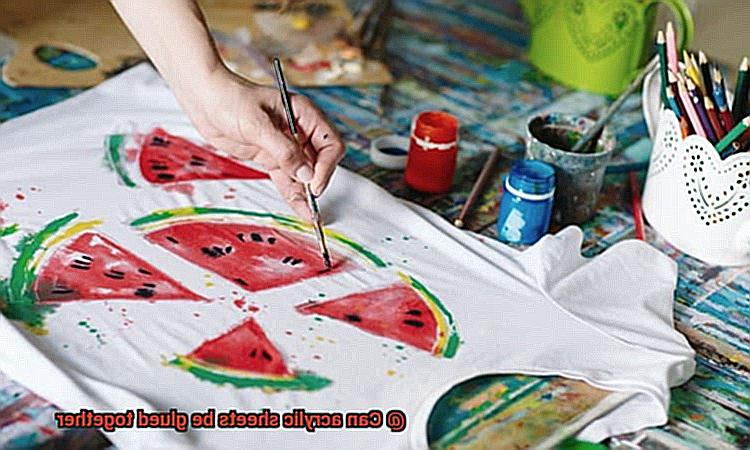
Bonding the Sheets:
As if orchestrating a symphony, align the two acrylic sheets with utmost care and press them together. To ensure an unyielding connection, employ clamps or weights as guardians, steadfastly holding them in place while the adhesive cures. Respect the dance of time – follow manufacturer instructions regarding curing duration.
Additional Steps for Optimal Bonding:
For an impeccable finish, some adhesives demand extra attention. Consider applying a primer or activator to enhance adhesion and fortify bond strength. Never underestimate the power of a trial run – test a discreet area beforehand to safeguard against any potential damage or discoloration.
Exploring Alternative Options:
Venture beyond the beaten path of solvent-based adhesives and discover alternative avenues for bonding acrylic sheets. Structural adhesives, such as epoxy or cyanoacrylate (super glue), offer unparalleled strength and resilience. Be mindful, though; these audacious options may leave faint scars on the acrylic’s surface.
Tips and Tricks to Achieve a Strong Bond between Acrylic Sheets
Acrylic sheets are a popular choice for various applications due to their versatility and durability. When it comes to bonding acrylic sheets together, it’s crucial to follow specific tips and tricks to ensure a strong and reliable connection.
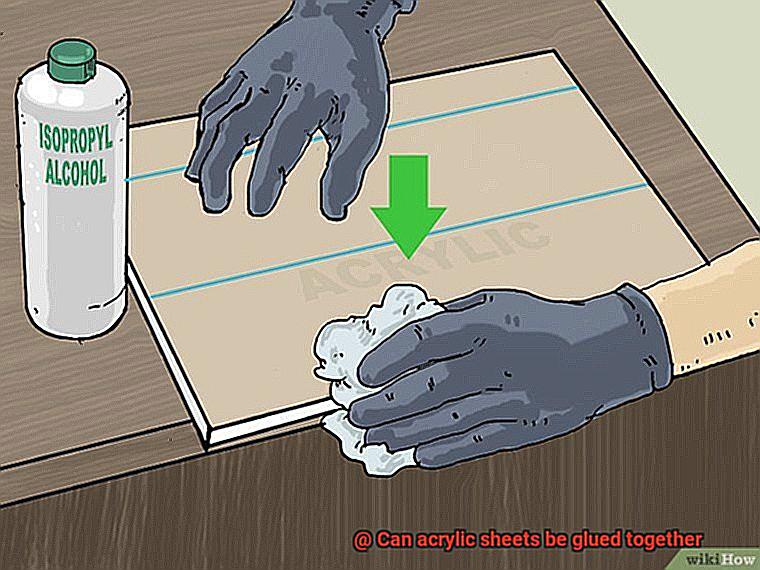
In this comprehensive guide, we will unveil the secrets to achieving a powerful bond between acrylic sheets, empowering you to create projects that withstand the test of time.
The Foundation – Cleanliness is Key
The first step towards a strong bond is ensuring that the surfaces to be bonded are pristine. Any dirt, grease, or contaminants can compromise the bonding process and weaken the final result. To achieve a clean slate, use a mild detergent or isopropyl alcohol solution to gently cleanse the surfaces. This meticulous preparation creates an optimal foundation for the adhesive, maximizing its bonding potential.
The Glue that Holds it All
Choosing the right adhesive is paramount to achieving a strong bond between acrylic sheets. Look for specialized acrylic adhesives or solvent cements specifically formulated for bonding acrylic materials. These adhesives possess high bonding strength and transparency, ensuring both structural integrity and aesthetic appeal. Always adhere to the manufacturer’s instructions regarding application techniques and compatibility with your specific acrylic sheets.
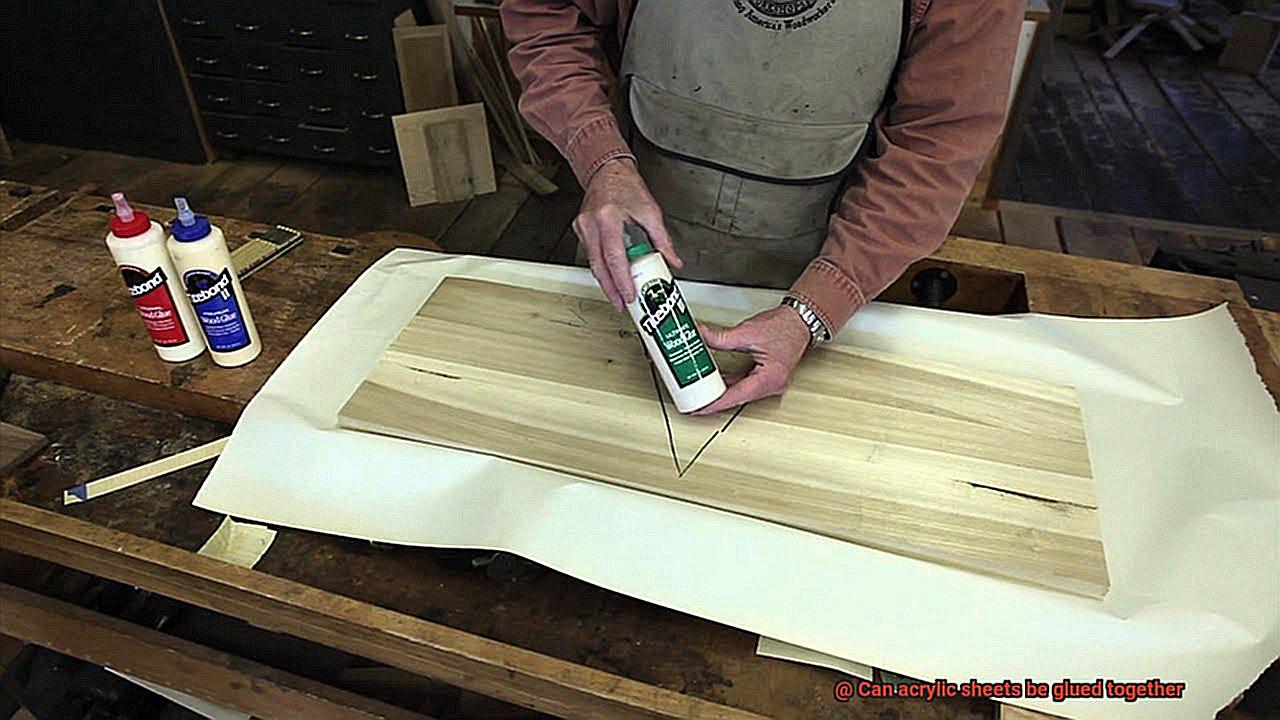
Texture for Tenacity
Enhance the adhesive’s grip by providing a textured surface on the acrylic sheets. Lightly sanding the surfaces before applying adhesive creates a rougher texture, increasing adhesion strength. However, caution must be exercised not to oversand, as excessive roughness can introduce stress concentration points that compromise the bond’s resilience.
Precision Application – The Art of Bonding
Applying the adhesive with precision is crucial for achieving a strong bond between acrylic sheets. Follow the manufacturer’s instructions diligently, typically involving applying a thin layer of adhesive to one surface and firmly pressing the two surfaces together. To ensure a uniform bond, evenly distribute pressure across the entire bonded area. This meticulous approach guarantees a secure and reliable connection.
Clamping for Strength
To further fortify the bond between acrylic sheets, consider using clamps or weights during the curing process. These tools hold the sheets in place, ensuring continuous contact between the surfaces until the adhesive fully cures. The application of even pressure throughout the curing process prevents any potential gaps or weak spots, resulting in an exceptionally robust connection.
Section 6: The Power of Patience
Allowing sufficient time for the adhesive to cure is crucial for achieving a strong bond between acrylic sheets. Curing times can vary depending on factors such as temperature and adhesive thickness. It is imperative to follow the manufacturer’s recommended curing time before subjecting the bonded acrylic sheets to any stress or load.
Patience during this stage ensures that the bond reaches its maximum strength, guaranteeing a long-lasting and dependable connection.
3KzZDi-aXD4″ >
Conclusion
Yes, acrylic sheets can be glued together.
Gluing acrylic sheets is a common method used in various industries and DIY projects. The adhesive used for bonding acrylic sheets is typically a solvent-based cement or an adhesive specifically designed for acrylics.
These adhesives work by chemically melting the surfaces of the acrylic sheets, creating a strong bond when they re-solidify. It is important to ensure that the surfaces to be glued are clean and free from any dust or debris.
When done correctly, gluing acrylic sheets together can result in a seamless and durable joint that is both visually appealing and structurally sound.

